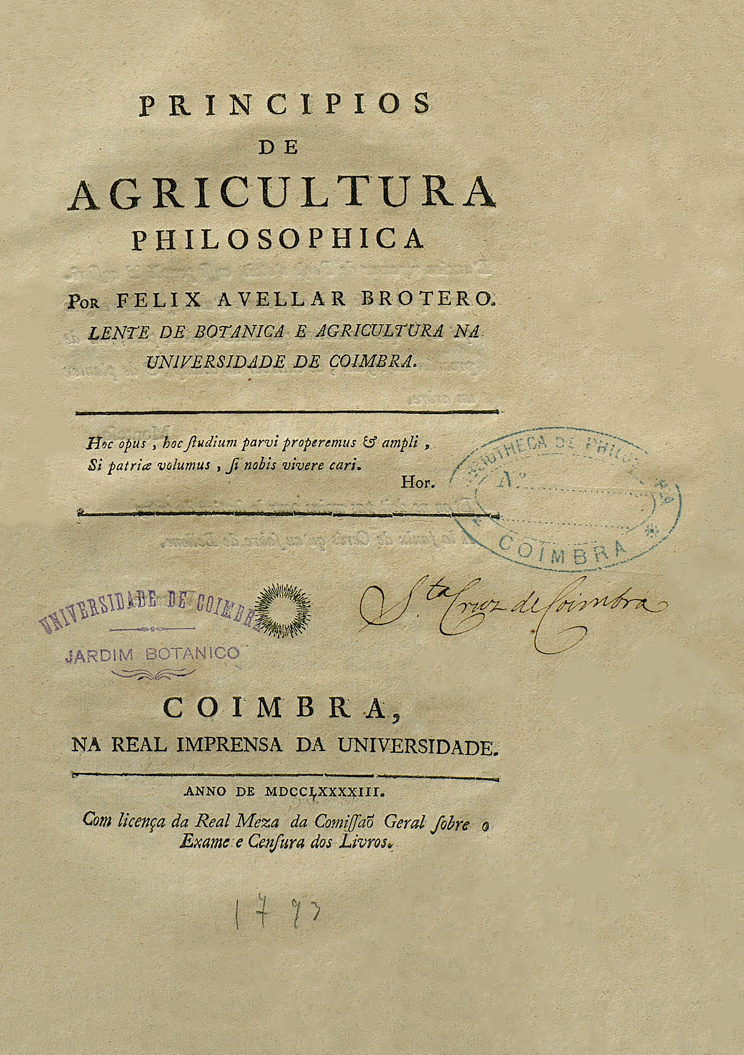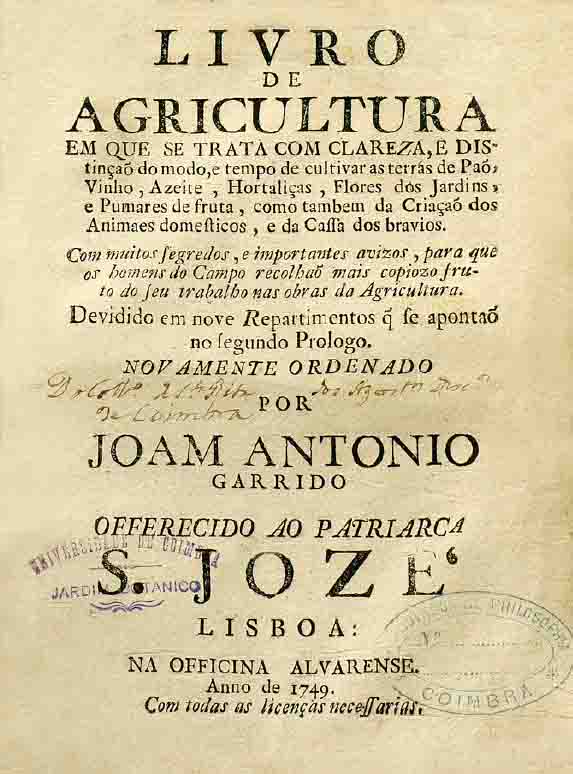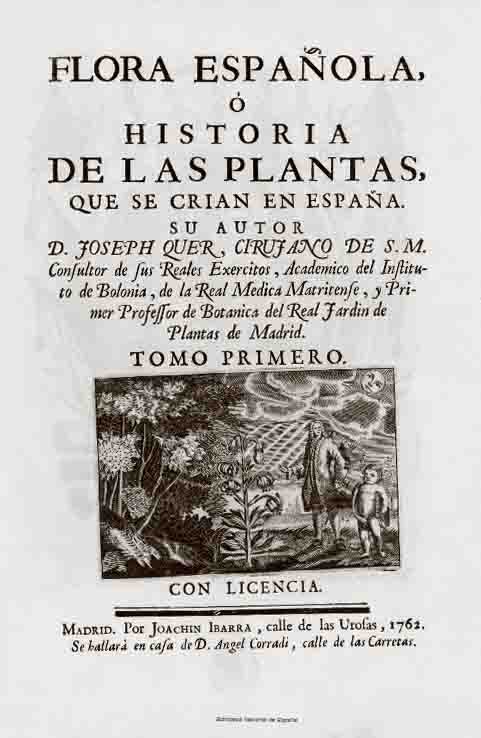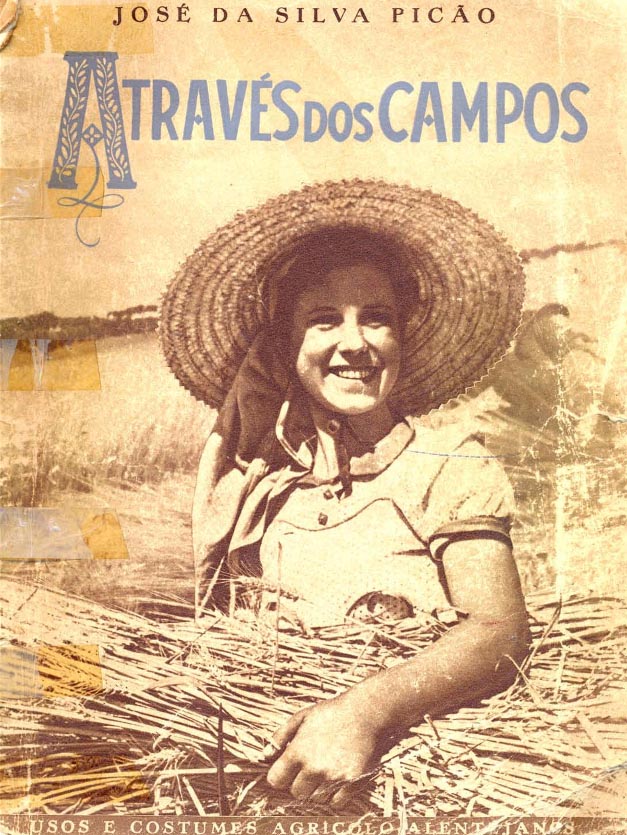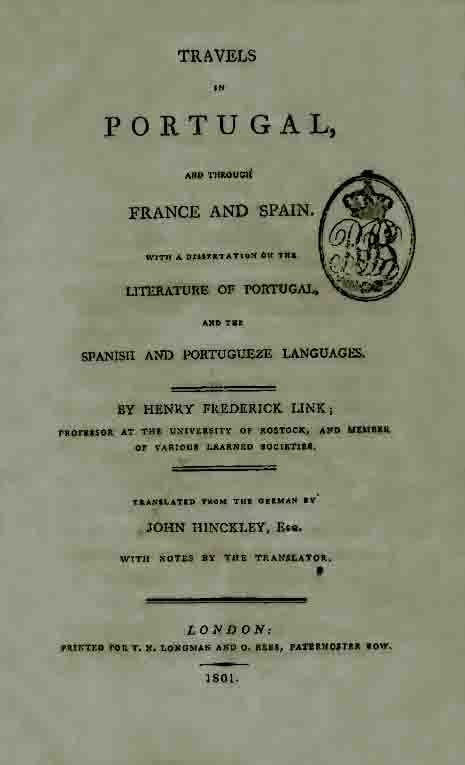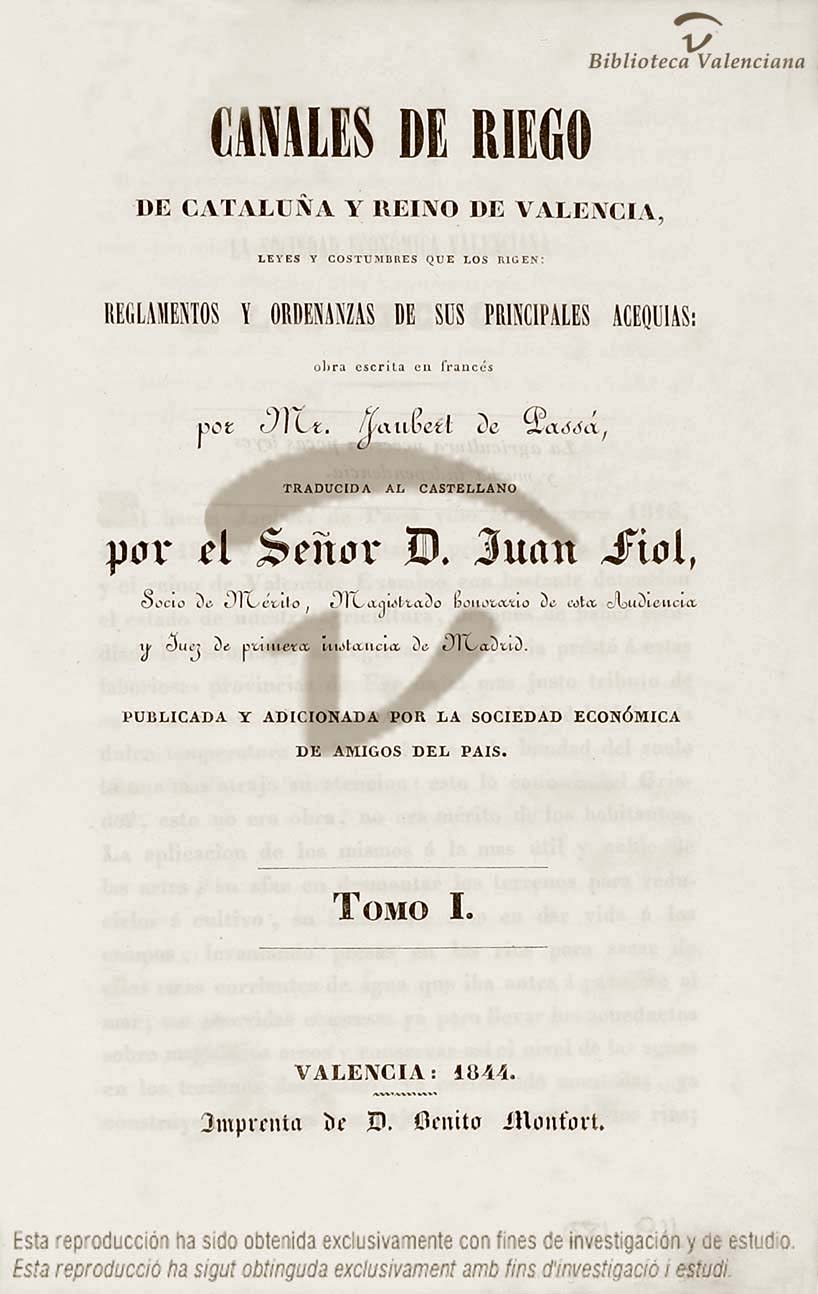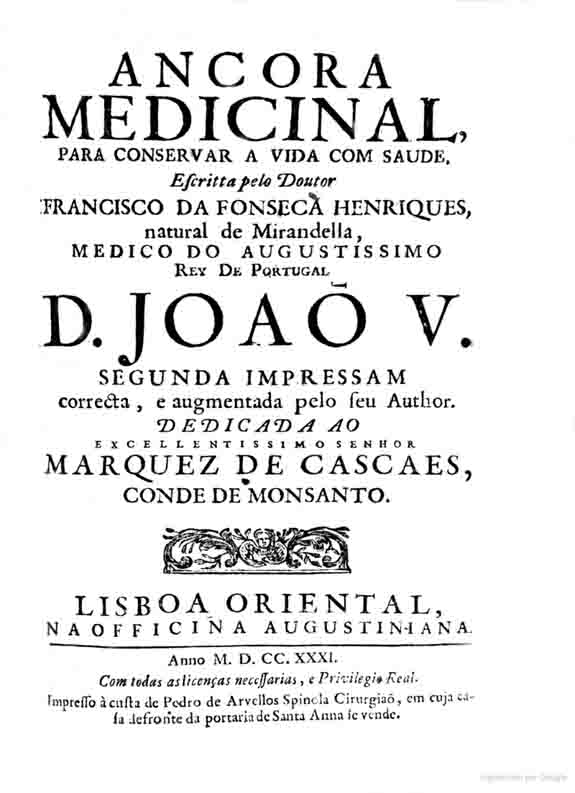Principios de agricultura philosophica – Anatomia, e Physiologia dos Vegetaes
Volumes
Chapters
Pages
Felix Avellar Brotero
Returning to Portugal, he was nominated Professor of Botany and Agriculture and director of the Botanical Garden at the University of Coimbra (1791). He continued to do botanical research, publishing two of his most important books: the first Portuguese flora, “Flora Lusitanica” (1804) and “Phytographia Lusitaniae selectior” (1827). Brotero is considered a prestigious scientist inside and outside Portugal, which is revealed through the plant species that are dedicated to his name.
Editor: Coimbra, Real Imprensa da Universidade
Year of edition: 1793
The main objective of this book is to make the botanical knowledge already available at the end of the 18th century accessible to a non-specialist reader. Gathering data about plant anatomy and physiology, he creates a manual for reference and contributes to developing the studies of this scientific area. Thus, Brotero translates the understanding of the time, which argued that botany was essential for improving agriculture. The publication coincides with the beginning of his duties as Professor of Botany and Agriculture at the University of Coimbra.
For Brotero agriculture is more than to work the land, and it should be guided by scientific knowledge. As he wrote, “Agriculture is not considered as a blind tradition of certain works, or mere empiricism, but as the science of the most profitable cultivation of the lands and plants, as it encompasses a great vastness of philosophical knowledge”.
The book is divided into six chapters (trunk, roots, branches, buds, leaves and accessory parts). He carefully describes each one, giving valuable information about morphology and anatomy, sometimes using examples of species to clarify his explanation. This precise information, is undoubtedly, the result of his academic studies in Paris, where for more than a decade he had the opportunity to research with the most outstanding botanists of the time.
F.C.
more sugestions…
Livro de agricultura em...
João António Garrido
Flora española...
José Quer Martínez
Através dos campos...
José da Silva Picão
Travels in Portugal and...
Heinrich Friedrich Link
Canales de riego...
François Jaubert de Passa
Ancora medicinal...
Francisco da Fonseca Henriques

